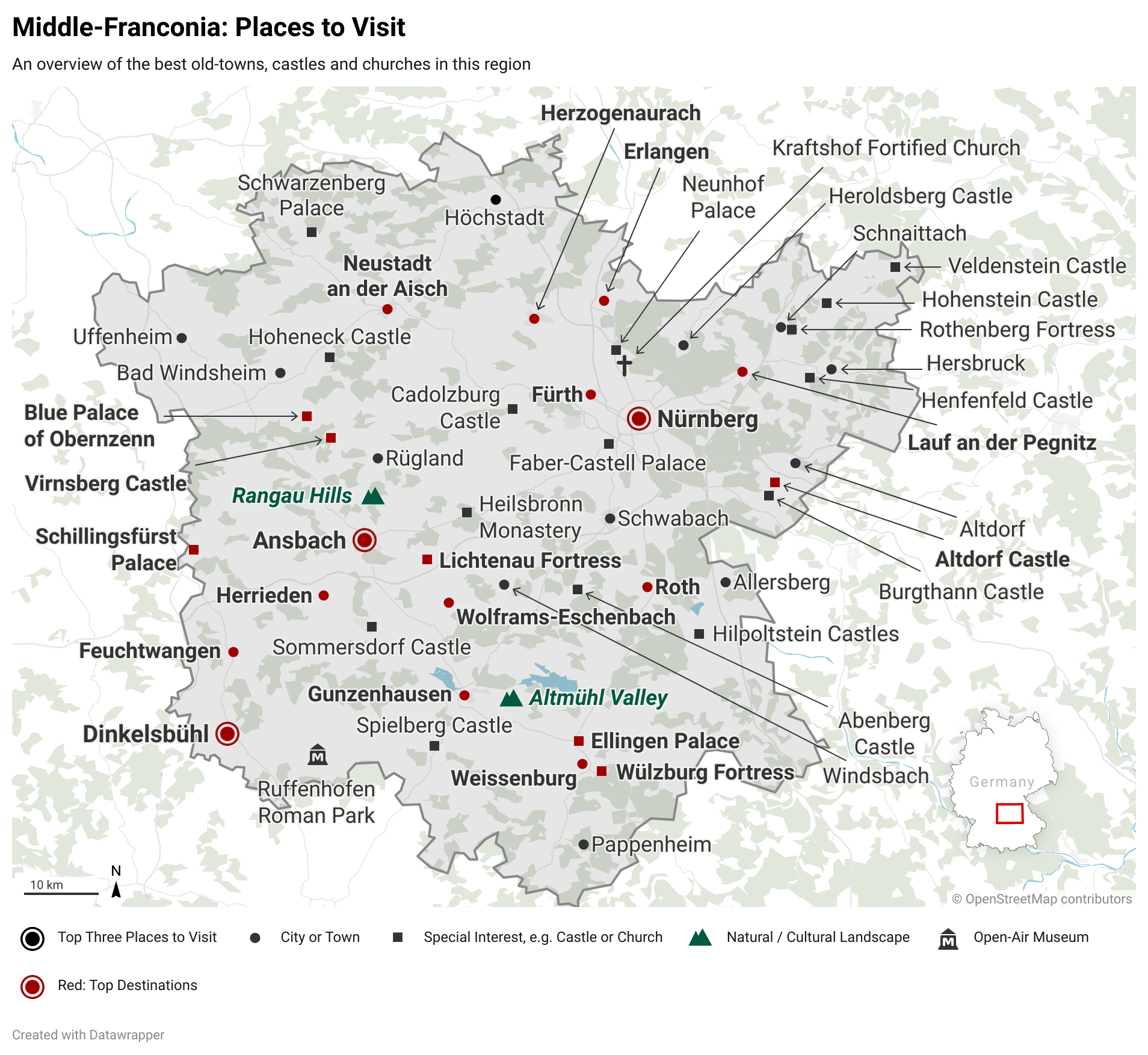
The story of Middle-Franconia is one and the same with the Imperial City of Nürnberg. As perhaps the most powerful city-state of the Empire, her cultural influence projected the Gothic and Renaissance styles into the region. Along with the Baroque city of Ansbach, the region has much to offer.

Middle-Franconia broadly covers the region between the Main and Danube river basins. The Main offers a path to the Lowland and Hanseatic trade centers, and the Danube is connected to the trade routes of the Orient. This strategic position meant that the region became a global trade center in the Middle Ages and through the 17th century. With her independence secured by the authority of the Emperor, Nürnberg played a critical role in the region’s and Empire’s politics.
Today there are only traces of this legacy. Nürnberg was reduced to ash in WW2, and though tastefully reconstructed, only glimpses of her architectural legacy can be seen. The region’s beauty lies in the ancient landscape of castles and small towns. Following the Thirty Years War, the locus of power shifted to the Hohenzollern Family, with their capital in Ansbach. They turned their city into a resplendent baroque city and influenced the reconstruction of nearby settlements.